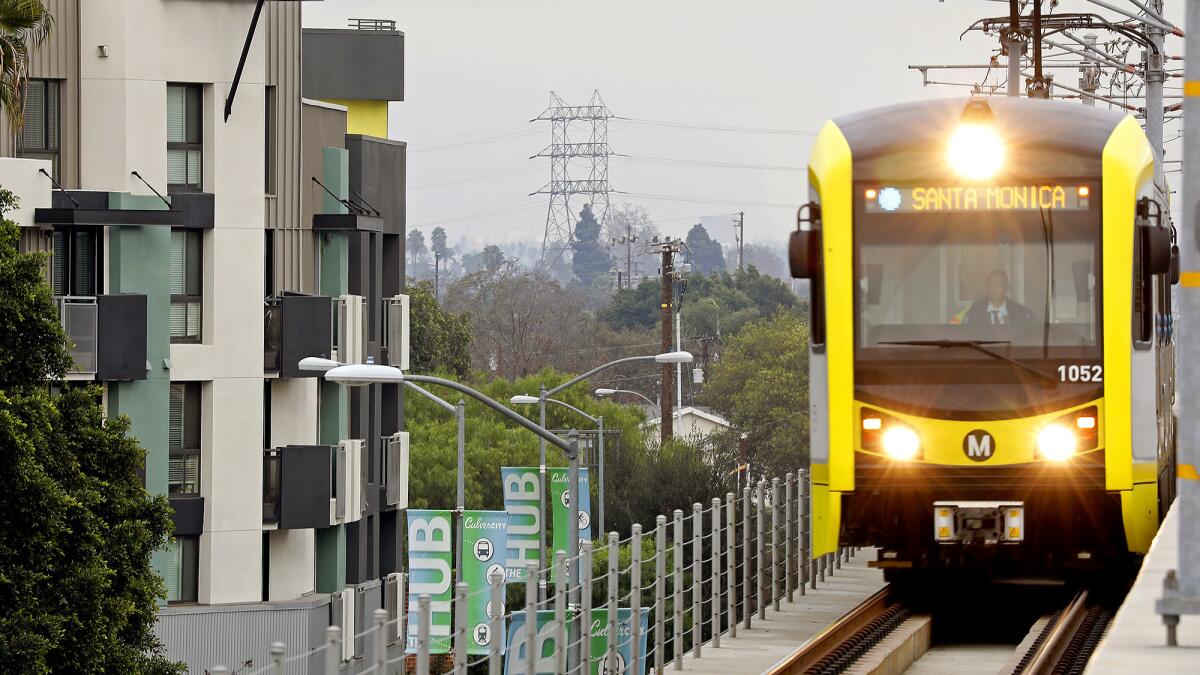L.A. homes near mass transit often sell for more, a study finds

Access to public transit is the new granite countertop when it comes to home listings.
That’s the takeaway from a study by real estate data firm Trulia, which looked at the language used to describe homes on the market in Los Angeles County from 2013 to 2018.
Mentions of the city’s transit almost doubled over the period, and for all but the most expensive quarter of homes, sellers got rewarded for it. On average, the premium was 4.2%.
“Transit is becoming a selling point,” said Issi Romem, Trulia’s chief economist. It’s surprising that this correlation is happening in Los Angeles, “the birthplace of sprawl,” he said.
On some level, real estate agents are just tapping into the zeitgeist, the way they’ve grabbed onto other home features that buyers might value. (Stainless steel appliances, anyone?)
Across the U.S., younger people are choosing to stay in urban areas longer, putting a premium on homes where they don’t have to get into a car to access their jobs or other amenities. A recent nationwide survey sponsored by Trulia found that 16% of respondents said they were unhappy about a lack of public transportation in their neighborhood.
At least one reason for the jump in listings touting transit has to do with the city’s investment in transit during the study period. Los Angeles is in the midst of a $120-billion effort to improve and expand transit, making the system more useful for riders.
A 6.6-mile stretch of Metro’s Expo Line from Culver City to Santa Monica opened in 2016, putting more homes in proximity to the train. The Gold Line was also extended that year.
The number of listings mentioning the proximity to bus routes remained steady during the study period while those highlighting nearby rail routes surged, with the Gold Line receiving the most attention, followed by the Red and Expo lines. Listings that mentioned the Expo Line showed the most growth as a share of overall listings.
The share of Los Angeles County listings on Trulia mentioning transit-related keywords rose to 4.5% in 2018 from 2.3%, according to Trulia. Although the fraction is still small, it is growing rapidly, Trulia said.
One wrinkle in Trulia’s study: Buyers of the most expensive quarter of homes in Los Angeles paid 10.5% less on average for properties advertising transit access.
Romem speculated that this has something to do with the fact that buyers at the higher end may be favoring lots in the hills, with views, or other features that aren’t as common in homes near trains.
Trulia’s study adjusted for the number of bedrooms and house size, but not for views.
The price premium near transit should concern policy makers because it means that it’s harder for lower-income people to afford to live near the lines.
Romem said the best way to solve this is to increase density near transit stops, something state lawmakers are grappling with in Senate Bill 50. That could encourage a “virtuous circle” where the system gets more riders and people have more affordable places to live, he said.
Trulia cautioned that merely adding transit keywords to a listing probably isn’t going to boost the sales price. Listings mentioning transit are about half a mile from the nearest Metro station on average, the data firm said, suggesting that price differences have more to do with actual proximity to transit rather than the listing language.






